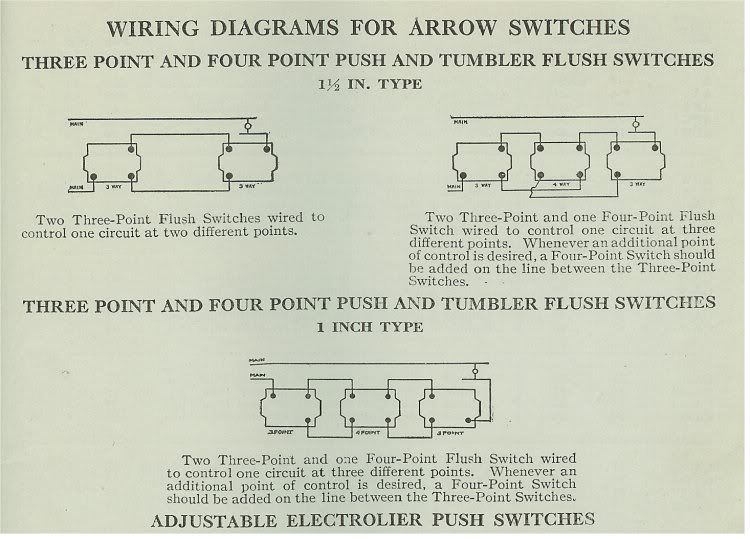I don't think I've ever seen a definitive answer to the question "Where did 3-way and 4-way switches get their names from?" I've heard plenty of theories, many plausable, some not.
But I just got an Arrow wiring devices catalog, quite old, but no date is given. Only information is "Catalog No. 22". There's a business card inside dated 1937.
In it, there are these wiring diagrams for 3-ways and 4-ways. Rather, 3-point and 4-point:

But I just got an Arrow wiring devices catalog, quite old, but no date is given. Only information is "Catalog No. 22". There's a business card inside dated 1937.
In it, there are these wiring diagrams for 3-ways and 4-ways. Rather, 3-point and 4-point:


